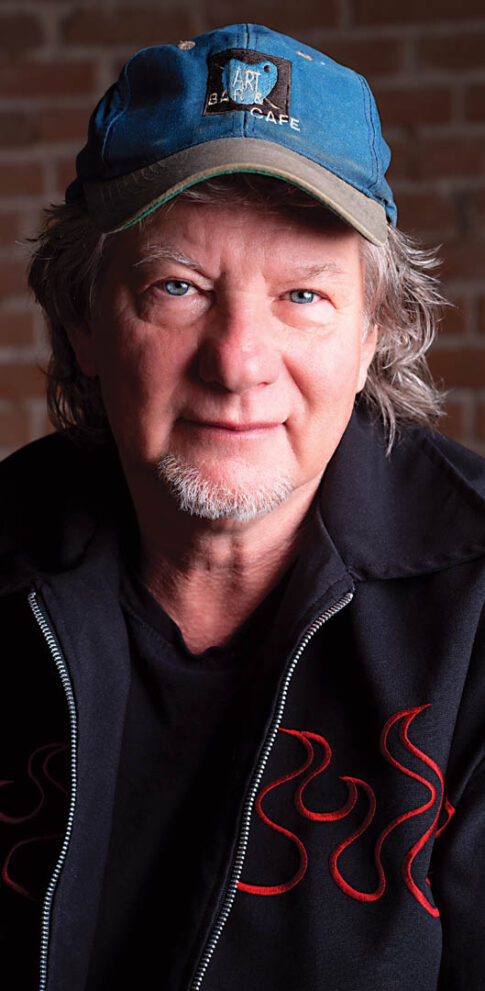
BY Taylor Adams Cogan
Back when Deep Ellum was boarded-up buildings and shopping carts, Jeff Swaney saw more than potential — he saw possibility. The kind that burns at both ends, then tosses the candle into a warehouse party with 2,500 people and says, “Let’s go again.”
He came to Dallas in 1981 after growing up in Detroit and getting an engineering degree from Michigan State. He was 23 and flush with money from a tech job at Hewlett-Packard. But corporate life didn’t fit. So, he did what any misfit in the city does: he started hanging around Deep Ellum.
There wasn’t much then for those who remember that far: Theater Gallery, 500 Café, Frank’s Club. Theater Gallery had a raw, concrete-floor charm, where punk bands blew out cheap amps and the audience leaned in, not away. Frank’s poured strong drinks and had a loose door policy — nobody cared who you were, only that you were in it.
The neighborhood felt unofficial, like a place still making up its mind, which made it irresistible.
He met the artists and craftsmen still working in the neighborhood — Mr. Spain, the cobbler; Mr. Okowita; a sheet metal guy — and felt a pull. The neighborhood felt more beat up and still had its soul.
So, he found a way to open some of those doors and turned up the volume.
Jeff and some friends started throwing outlaw warehouse parties — not exactly legal, and definitely legendary. They launched Club Cleareview, an underground spot that ran all night and pulled in thousands. When it got too hot, they moved it, then moved it again. Out of those spaces came the Art Bar & Café, the Blind Lemon, and other spots stitched together with blacklight rooms, dancers, and weirdness. You could walk through portals and find another world — punk kids, yuppies, drag queens, everyone swirling together before identity was branding.
These parties weren’t just events — they were experiments in freedom, creating something from nothing and watching who showed up.
“It was outlaw, it was raw. It was perfect for me,” Jeff says. “I wasn’t a corporate guy, and had a great time.”
The clubs weren’t just popular — they were transformative. Clearview ran for 20 years while the neighborhood evolved around it. D Magazine once called it the 17th biggest thing in Dallas. (Seventeen may not seem all that high, but in a city with the State Fair, the original margarita machine, and the first Neiman Marcus, a pumping Deep Ellum club busting top 20 is pretty solid.)
At its peak, the scene pulled more people than anywhere else in the city. And Jeff kept building, opening more spots. He helped grow a scene that gave bands like Old 97’s and Tripping Daisy their first real stages. Deep Ellum became a destination because of people like Jeff, who lit the spark and didn’t worry where the flame might go.
He wasn’t chasing trends, but was building infrastructure for a culture that didn’t yet have a blueprint.
As he built destinations, he smartly bought the real estate under them. He worked with Westdale, and he ended up helping to bring in Union Bankers, Adam Hats, and 3200 Main. Along the way, he brokered numerous Deep Ellum deals because he understood what was sacred, and what needed saving.
He also knew what couldn’t last.
As the 1990s wore on, Deep Ellum saw some bad landlords, drug deals, and guns. Jeff says the city turned its back.
“We were fighting early battles just to keep it safe,” he says. “But for a while — that five-year window — the porridge was perfect.”
Jeff was part of starting the Deep Ellum Foundation and gave it club memorabilia and photos — artifacts from a time when the walls melted from Red Hot Chili Peppers shows and nobody knew who they were yet.
It said, ‘This matters, and don’t forget it.’
Eventually, he got out. Grew up, had kids, and invested. Started 58 different partnerships — music, oil and gas, banks, whatever felt right.
“No paperwork, no licenses. I hated all that. I just wanted to be my own person.”
Some things worked, some didn’t. He helped Mark Cuban with the real estate involved with the broadcast.com launch and set up the facilities that were later sold to Yahoo
“We were penniless, drinking $5 champagne,” he says.
But Deep Ellum was always home.
“From 2626 Elm to the corner of Main, Crowdus and Elm — we killed it,” he says. “I put everything I had into it for 40 years. My heart. My soul. I challenge anybody to say they’ve given more.”
He doesn’t miss the chaos. But he misses the magic — and he wants to see it last.
Today, he’s in Bend, Oregon, where he lives close to the outdoors, started a film festival, and regularly works with a handful of charities. But he occasionally looks back, wondering who will carry the banner next.
“Who’s the next Mike Snider? The next Frank, or Pete, or Russell? Not the people who want to pop in and out, but the ones who will stay. Who will love it the way we did?”
